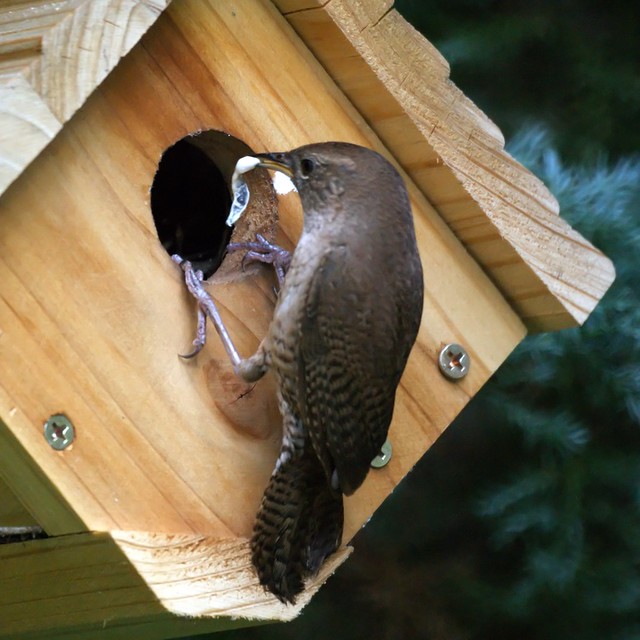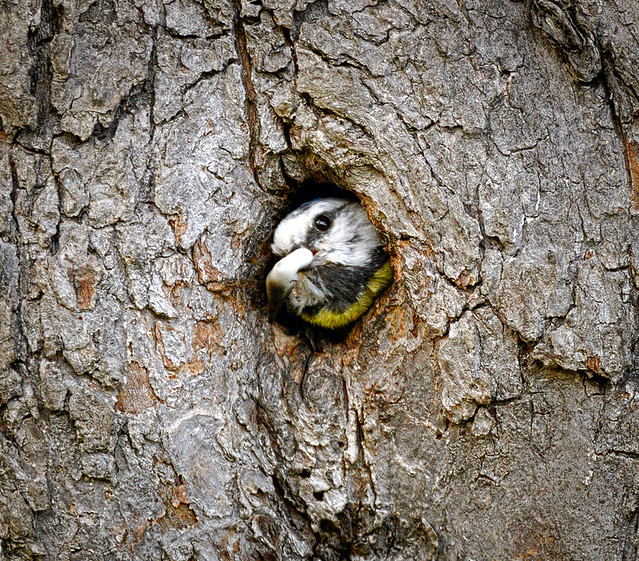Did you know? Fecal sacs
Birds don't wear diapers. But in some songbirds, babies expel their waste in a membrane-filled sac, which is then removed from the nest by a parent.

Keeping the nest clean isn't just about good hygiene. Removal of waste reduces the chances that predators will find (by scent) the vulnerable nestlings. It may also help to prevent illnesses developing in the baby birds. Fecal sacs are removed from the nest, sometimes right as they are being produced! Some baby birds give a 'signal' to indicate they are about to eliminate (poop). The below video shows a baby American Robin shifting around in its nest to expose its backside. The adult waits for the sac and then removes it immediately.

Some baby birds leave their fecal sacs along the outer edge of the nest for later removal, as can be seen in this video of a Carolina Wren nest, though the adult happens to remove the sac immediately in the clip. Sometimes the need to eliminate comes immediately after feeding, which can be seen in clearly in this video. Most people aren't even aware that this amazing baby bird "diaper service" exists. But if you live among Common Grackles, and you happen to have a swimming pool, you just might be painfully aware of fecal sacs. Grackles are naturally inclined to deposit fecal sacs in water - streams, ponds or rivers, traditionally. However, if a swimming pool is convenient, it might just end up being a favorite "sewer service" for neighborhood grackles!





Comments
Leave a comment
Thank you!